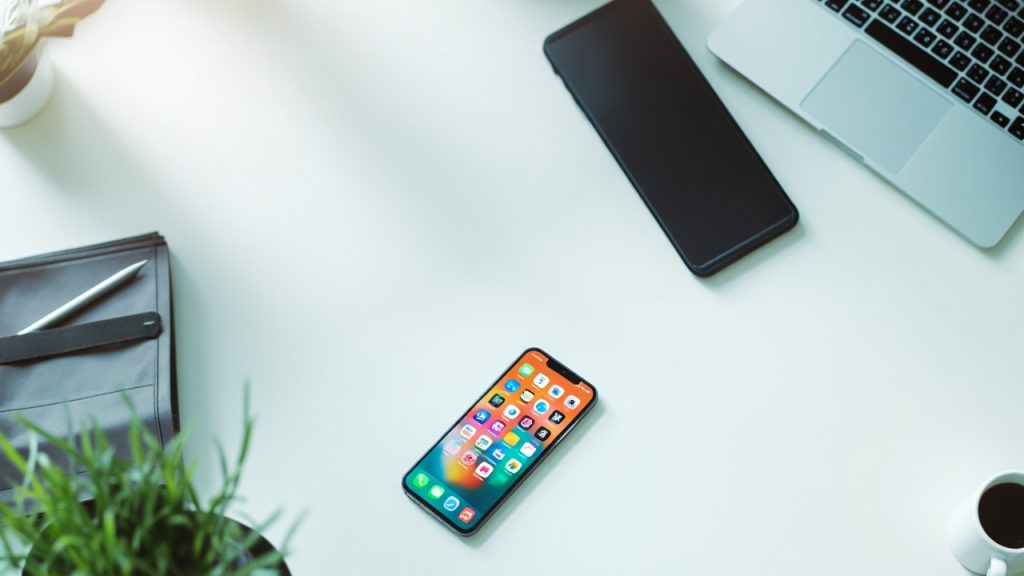In our hyperconnected world, the average knowledge worker checks email every 12 minutes and switches between apps over 300 times per day, according to RescueTime’s 2023 productivity report. This constant digital switching creates a phenomenon psychologists call “attention residue,” where parts of our attention remain stuck on previous tasks, significantly reducing cognitive performance. The solution lies in leveraging powerful distraction blocker apps that act as digital gatekeepers, protecting your focus from the endless stream of notifications, social media alerts, and tempting websites that fragment your attention throughout the day.
These sophisticated tools have evolved far beyond simple website blockers, now offering intelligent scheduling, behavioral analytics, and adaptive learning systems that understand your unique productivity patterns. Whether you’re a remote worker struggling with social media distractions, a student battling procrastination, or an entrepreneur seeking to optimize deep work sessions, the right distraction blocker apps can transform your relationship with technology from one of constant interruption to intentional engagement.
What Are Distraction Blocker Apps and Why You Need Them
Distraction blocker apps are specialized software solutions designed to limit or eliminate access to distracting websites, applications, and digital services during predetermined time periods. Unlike traditional parental control software, these tools are specifically engineered for self-regulation, offering sophisticated features like scheduling, whitelist management, and productivity analytics that help users build sustainable focus habits.
The neuroscience behind these tools is compelling. Research from Stanford University’s Human-Computer Interaction Lab demonstrates that it takes an average of 23 minutes and 15 seconds to fully regain focus after a digital interruption. When you consider that the typical office worker faces an interruption every 11 minutes, it becomes clear why sustained concentration feels nearly impossible without technological assistance.
Modern distraction blockers operate through several mechanisms:
- Network-level filtering that blocks access at the router or device level
- Application monitoring that tracks and limits time spent in specific programs
- Behavioral triggers that activate based on usage patterns or time of day
- Mindful friction that adds deliberate delays or prompts before accessing distracting content
The psychological principle underlying these tools is what researchers call “commitment devices” – voluntary restrictions we place on our future selves to align our actions with our long-term goals. By removing the constant need for willpower-based decisions, distraction blockers free up mental resources for meaningful work while gradually rewiring our relationship with digital stimuli.
Top-Rated Distraction Blocker Apps for Maximum Productivity
The landscape of distraction blocking software has matured significantly, with several standout applications leading the market through innovative features and proven effectiveness. Based on user reviews, feature sets, and independent productivity studies, these platforms represent the gold standard in focus enhancement technology.
Freedom stands as the most comprehensive cross-platform solution, offering synchronized blocking across Windows, Mac, iOS, and Android devices. Its strength lies in advanced scheduling capabilities and “locked mode” that prevents users from disabling blocks during active sessions. Freedom’s analytics dashboard provides detailed insights into blocking patterns and productivity gains, making it invaluable for users seeking data-driven focus improvement.
Cold Turkey dominates the Windows ecosystem with its robust free tier and enterprise-grade pro features. The application excels in granular control, allowing users to block specific applications, websites, or even individual browser tabs based on complex rule sets. Its “frozen turkey” mode creates virtually unbreakable blocks, while the built-in Pomodoro timer integrates seamlessly with blocking schedules.
For Mac users, SelfControl offers an elegant, minimalist approach that emphasizes simplicity over feature complexity. Once activated, SelfControl cannot be disabled until the timer expires, even through system restarts or application deletion – a design philosophy that prioritizes commitment over flexibility.
Mobile-specific solutions like Offtime and Forest address the unique challenges of smartphone distraction through gamification and social accountability features. Forest’s virtual tree-planting mechanism creates positive reinforcement loops, while Offtime’s intelligent filtering allows emergency calls while blocking recreational apps.
How to Choose the Best App Blocker for Your Specific Needs
Selecting the optimal distraction blocker requires careful analysis of your specific use cases, device ecosystem, and productivity goals. The most feature-rich application isn’t necessarily the best choice if it doesn’t align with your workflow patterns and technological environment.
Begin by conducting a distraction audit using tools like RescueTime or built-in screen time analytics to identify your primary sources of digital distraction. This data reveals whether your challenges stem from social media browsing, excessive email checking, gaming, or news consumption – insights that directly inform your blocking strategy.
Consider your device ecosystem and cross-platform requirements. Remote workers who frequently switch between desktop computers, tablets, and smartphones benefit most from synchronized solutions like Freedom or Focus, which maintain consistent blocking policies across all devices. Conversely, users working primarily on single platforms may prefer specialized tools like Cold Turkey for Windows or HeyFocus for Mac.
Evaluate your commitment preference along the spectrum from flexible to inflexible blocking:
- Gentle reminders – Tools like StayFree that provide awareness without hard blocks
- Friction-based blocking – Applications that add delays or require intentional actions to access blocked content
- Strict enforcement – Unbreakable blocks that cannot be disabled during active sessions
- Nuclear options – Complete device lockdown or internet disconnection
Your personality type and self-control tendencies should guide this choice. Research from the Journal of Consumer Psychology suggests that individuals with high trait self-control benefit more from gentle reminder systems, while those with lower self-control achieve better outcomes with strict enforcement mechanisms.
Budget considerations also play a role, with free options like SelfControl and Cold Turkey Basic offering robust functionality for casual users, while premium solutions provide advanced analytics, team management, and enterprise integrations that justify their subscription costs for professional users.
Setting Up Your Digital Focus Strategy with Anti-Distraction Tools
Effective implementation of distraction blocker apps requires strategic planning that goes beyond simply installing software and blocking social media sites. A comprehensive digital focus strategy integrates blocking tools with broader productivity methodologies, creating synergistic systems that amplify individual components.
Start by establishing focus time blocks that align with your natural energy rhythms and work demands. Research from the DeskTime productivity app reveals that the most productive people work in focused 52-minute intervals followed by 17-minute breaks. Configure your blocking software to automatically activate during these high-value work periods, ensuring consistent protection without requiring daily manual intervention.
Implement progressive blocking schedules that gradually increase in strictness as important deadlines approach. For example, begin with 2-hour morning blocks for deep work, expand to 4-hour afternoon sessions during busy periods, and activate full-day blocks during critical project phases. This escalation prevents productivity tools from feeling punitive while maintaining flexibility for normal work rhythms.
Create context-specific blocking profiles tailored to different work modes:
- Deep Work Mode – Blocks all social media, news sites, and non-essential communication tools
- Communication Mode – Allows email and messaging while blocking recreational websites
- Research Mode – Permits educational sites while blocking entertainment and social platforms
- Break Mode – Temporarily lifts restrictions during scheduled rest periods
Integration with existing productivity systems amplifies effectiveness significantly. Combine blocking apps with tools from our comprehensive productivity app guide to create unified workflows that support sustained focus. For instance, pair Pomodoro timers with automated blocking activation, or sync calendar appointments with context-appropriate restriction profiles.
Establish clear emergency protocols that balance commitment with practical flexibility. Most professional environments occasionally require access to typically blocked resources for legitimate work purposes. Configure emergency access procedures that introduce sufficient friction to prevent casual override while allowing genuine work-related exceptions.
Advanced Features That Make Modern Distraction Blockers More Effective
The latest generation of distraction blocker apps incorporates sophisticated features that go far beyond basic website filtering, leveraging artificial intelligence, behavioral psychology, and advanced analytics to create more nuanced and effective focus enhancement systems.
Adaptive learning algorithms represent perhaps the most significant advancement in distraction blocking technology. These systems analyze your usage patterns, productivity metrics, and goal achievement rates to automatically adjust blocking parameters for optimal effectiveness. Freedom’s AI-powered insights can identify subtle productivity patterns and suggest schedule optimizations that users might never discover manually.
Modern applications increasingly incorporate behavioral intervention techniques borrowed from cognitive behavioral therapy and habit formation research. Instead of simply blocking access, these tools present users with reflection prompts, alternative activity suggestions, or brief mindfulness exercises when distraction attempts are detected. This approach addresses the underlying psychological drivers of distraction rather than merely suppressing symptoms.
Social accountability features tap into powerful motivational mechanisms by connecting users with accountability partners, team members, or online communities. Applications like Forest enable group focus sessions where individual distraction negatively impacts the entire team’s progress, while Focusmate pairs users with virtual co-working partners for real-time accountability.
Advanced analytics capabilities now provide granular insights into productivity patterns, distraction triggers, and focus improvement over time. These dashboards track metrics like:
- Average focus session duration and trends
- Most problematic distraction sources and peak temptation times
- Productivity correlation with different blocking configurations
- Long-term habit formation progress and regression patterns
Smart scheduling systems integrate with calendar applications, project management tools, and even biometric devices to automatically adjust blocking intensity based on contextual factors. These systems might increase restriction levels during important meetings, reduce blocking during scheduled collaboration time, or adapt to stress levels detected through wearable devices.
Cross-platform synchronization has evolved beyond simple block list sharing to include real-time status updates, unified analytics, and coordinated activation across entire device ecosystems. This comprehensive approach prevents the “device switching” workaround that undermines single-platform solutions.
Common Mistakes When Using Website and App Blocking Software
Despite their proven effectiveness, many users fail to realize the full potential of distraction blocker apps due to implementation errors that undermine long-term success. Understanding these pitfalls enables more strategic deployment and sustainable habit formation.
The most prevalent mistake is over-blocking – implementing restrictions so comprehensive and inflexible that they interfere with legitimate work activities or create excessive psychological reactance. Research from the University of California, Irvine indicates that overly restrictive digital environments can actually increase stress levels and reduce creative problem-solving abilities. The optimal approach involves targeted blocking that eliminates primary distraction sources while preserving access to work-essential resources.
Inconsistent application represents another critical error that prevents habit formation and reduces long-term effectiveness. Users who sporadically activate blocking software or frequently override restrictions fail to develop the automatic behavioral patterns that make these tools truly transformative. Consistency matters more than intensity – daily 2-hour blocks prove more effective than occasional 8-hour lockdowns.
Many users neglect to address underlying psychological drivers of distraction, treating blocking software as a complete solution rather than one component of a broader focus enhancement strategy. Distraction often stems from anxiety, boredom, or avoidance behaviors that require additional interventions like stress management techniques, task restructuring, or cognitive behavioral approaches found in our free productivity resources.
Configuration complexity can paradoxically reduce effectiveness when users create elaborate rule sets that require constant maintenance and decision-making. The most successful implementations tend toward simplicity – a few well-designed blocking profiles that activate automatically based on time or context, rather than complex conditional logic that becomes burdensome to maintain.
Failing to establish realistic expectations leads many users to abandon otherwise effective tools after initial challenges. Distraction blocking is a gradual process that typically requires 2-3 weeks to show significant results and several months to create lasting behavioral changes. Users expecting immediate transformation often discontinue usage before experiencing the compound benefits of sustained practice.
Neglecting the replacement principle creates problematic gaps where blocked activities are simply substituted with different but equally distracting behaviors. Effective blocking strategies pair restriction with positive alternatives – blocked social media time might be replaced with brief walks, focused breathing, or progress toward specific goals.
Measuring Your Progress and Building Long-Term Focus Habits
Sustainable success with distraction blocker apps requires systematic measurement and gradual habit formation that extends beyond the software itself. The most effective users develop comprehensive tracking systems that monitor both quantitative metrics and qualitative improvements in focus capacity and work satisfaction.
Establish baseline measurements before implementing blocking software to create meaningful comparison points for progress evaluation. Key metrics include daily focus session duration, task completion rates, time spent on recreational vs. productive activities, and subjective assessments of mental clarity and work satisfaction. Applications like RescueTime provide excellent baseline data that can be tracked over time.
Modern distraction blockers offer increasingly sophisticated native analytics that go beyond simple usage tracking to provide insights into productivity patterns and behavioral trends. Freedom’s annual reports show users average a 2.3x increase in productive time within the first month, while also identifying optimal blocking schedules based on individual usage patterns.
Implement weekly review protocols that examine both quantitative data and qualitative experiences:
- Quantitative Review – Analyze blocking session compliance, average focus duration, and productivity metric improvements
- Qualitative Assessment – Reflect on stress levels, work satisfaction, and perceived cognitive clarity changes
- Strategy Adjustment – Modify blocking schedules, add/remove restricted sites, or experiment with different enforcement levels
- Goal Alignment – Ensure blocking configurations continue supporting evolving work priorities and personal objectives
Focus on leading indicators rather than lagging outcomes when measuring progress. While project completion and productivity metrics matter, early indicators like successful blocking session completion, reduced override frequency, and increased voluntary focus time predict long-term success more reliably.
Develop habit stacking strategies that connect distraction blocking with existing routines and positive behaviors. For example, automatically activate focus blocks when opening specific work applications, or pair blocking session completion with small rewards like favorite beverages or brief outdoor time.
Create progressive challenges that gradually increase focus capacity over time. Begin with comfortable 30-minute blocks and systematically extend duration as concentration stamina improves. Research from the University of Rochester suggests that gradual progression creates more sustainable behavioral changes than aggressive initial targets.
Consider implementing accountability systems that leverage social motivation and external commitment mechanisms. Share progress with colleagues, join online focus communities, or establish friendly competitions with peers using similar tools. Social accountability significantly increases adherence rates and long-term success probability.
The landscape of digital distraction continues evolving, but the fundamental human need for sustained focus remains constant. Distraction blocker apps have matured into sophisticated tools that address not just the symptoms of digital overwhelm, but the underlying behavioral patterns that fragment our attention throughout the day. Success lies not in finding the perfect blocking software, but in thoughtfully implementing these tools as part of a comprehensive focus enhancement strategy.
The most effective approach combines technological solutions with behavioral insights, creating systems that work with your natural tendencies rather than against them. Start with careful assessment of your specific distraction patterns, choose tools that align with your device ecosystem and commitment preferences, then implement progressive blocking schedules that build sustainable focus habits over time.
Remember that these applications are ultimately training wheels for developing intrinsic focus capacity. As you build stronger attention muscles and more intentional technology relationships, you may find yourself relying less on external restrictions and more on internal awareness and choice. The goal isn’t permanent dependence on blocking software, but rather the development of skills and habits that enable sustained deep work in our hyperconnected world.
Take action today by conducting a brief distraction audit, identifying your primary focus challenges, and experimenting with one of the recommended distraction blocker apps. Your future self – and your most important projects – will thank you for making this investment in your cognitive capacity and professional effectiveness.



